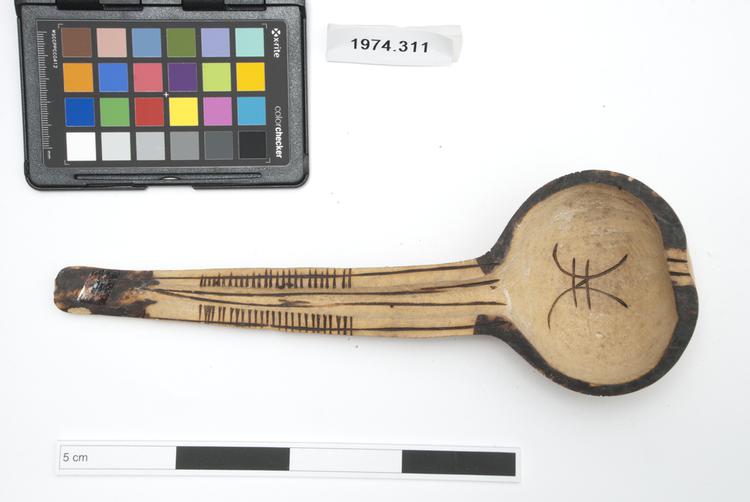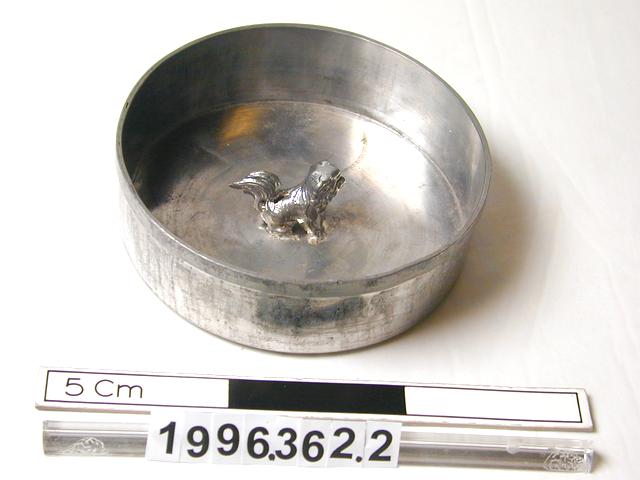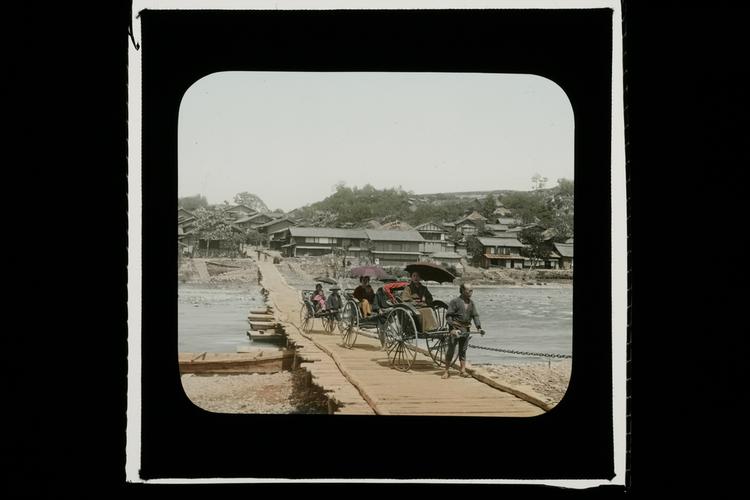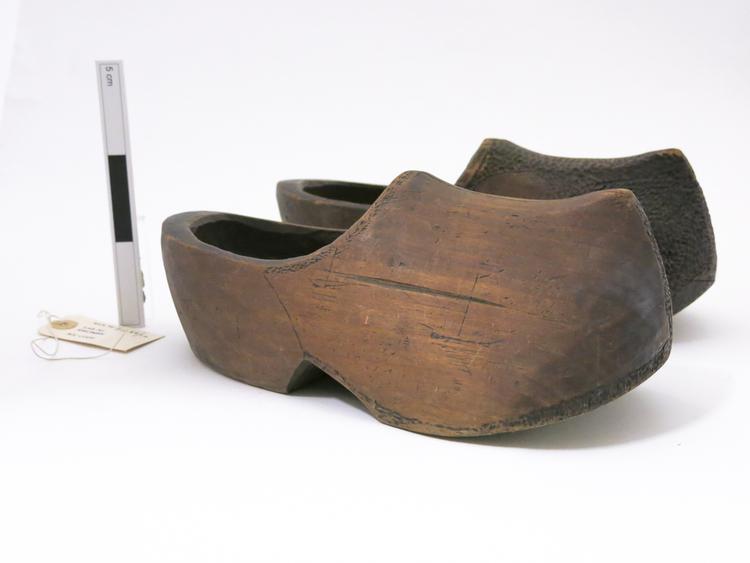
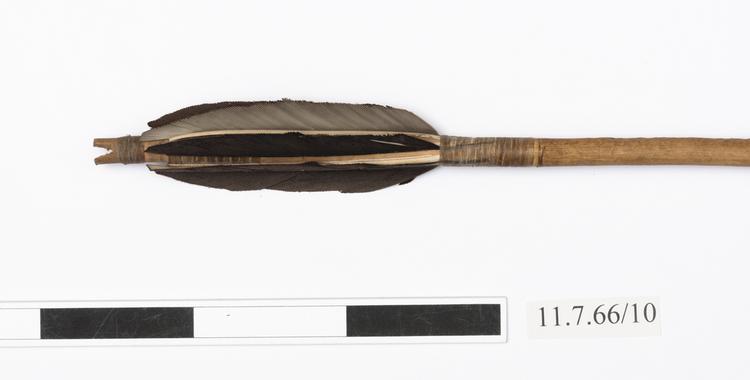
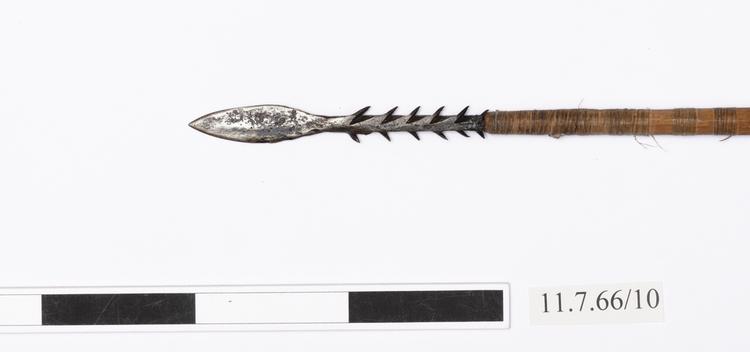
Arrow from the Hadza people of Lake Eyasi, Tanzania. The arrow has a small, lanceolate foreblade with 12 small, alternating barbs behind. The head is set into shaft by the tang and bound in place with plant material. The shaft is made from a long, thin cylinder of light-coloured wood. The fletching is formed of vulture feathers that are dark brown on one side and light in colour on the other. The feathers are bound to the shaft using plant fibre.
This type of arrow was used for hunting dik-dik, or kasama, which is a small type of antelope.



